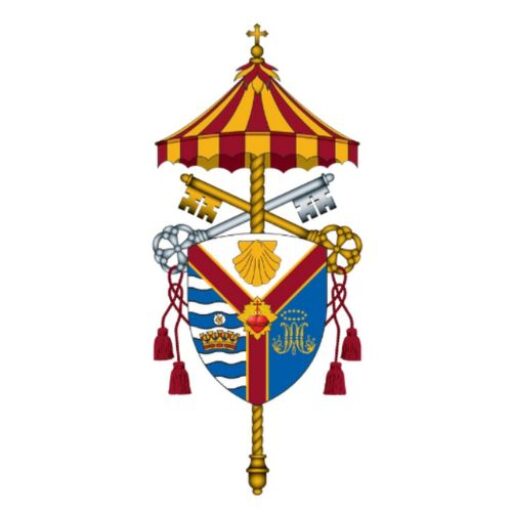Sanctuary Crucifix

The crucifix is THE Christian symbol commemorating Jesus’ suffering and death for the salvation of humanity. “For our sake God made the one who knew no sin to be sin, so that in him we might become the righteousness of God” (2 Cor 5:21).
Every time, place, and culture has varied representations of the Crucifixion, depicting Christ as dying or deceased or in another state of ecstasy or resurrection glory. In this case, the goal was to create an ethereal representation, one that is detailed but not exact, allowing for personal interpretation by the viewer.
The design of the crucifix drew inspiration from an old 18-inch crucifix found in a sacristy cabinet, perhaps used in Good Friday liturgies of past years. This artifact became the starting point for a dialogue that led to a modern interpretation scaled to over six feet tall, blending historical elements with contemporary artistry and theological insight.
The design process started with discussions covering all aspects of the corpus. Should Christ be depicted as living, passed, or resurrected? If so, that impacts a lance mark. Should traditional depictions be reinterpreted with anatomical accuracy, such as placing Christ’s wounds in the wrists rather than the palms and positioning the fingers to convey tension? Should the skin of His arms pucker where the nails penetrate? Though lengthy, these detailed conversations added depth and authenticity to the figure that will inspire thousands for years. The design emphasized a shift from literal interpretations to a more allusive approach.
The design features a black matte cross with an ivory-toned corpus. The halo over Christ’s head mirrors gilded motifs on the altar, ambo, and tabernacle stand, unifying the sanctuary’s aesthetic. The process culminated in a final design reflecting a shared vision of Christ alive, embodying vitality and hope.
“O Lord, once lifted on the glorious tree, your death has brought us life eternally.”
Final verse of the hymn “Lift High the Cross” by George Kitchin and Michael R. Newbolt.

Lift High the Cross
The Feast of the Exaltation of the Holy Cross, celebrated on September 14, commemorates the discovery of the True Cross by Saint Helena in 326 AD. This feast highlights the significance of the cross as a symbol of Christ’s victory over death. In the Catholic tradition, the cross is venerated on Ash Wednesday and Passion (Palm) Sunday, reminding the faithful of Christ’s suffering and the promise of redemption.
Built of Living Stones reminds us well that “the cross with the image of Christ crucified is a reminder of Christ’s paschal mystery. It draws us into the mystery of suffering and makes tangible our belief that our suffering when united with the passion and death of Christ leads to redemption.”
The same USCCB document then goes on to delineate the options we are given for how to do this within our sanctuaries: 1. A crucifix may be placed upon the altar. 2. A crucifix may be suspended over the altar. 3. A crucifix may be affixed one of the sanctuary walls. 4. A processional cross of sufficient size may be placed in a stand within the sanctuary following the procession. (side-note – If one of the first three options is adopted, the processional cross must be placed out of view following the procession.)
The original crucifix (used from 1898 to 1939).

